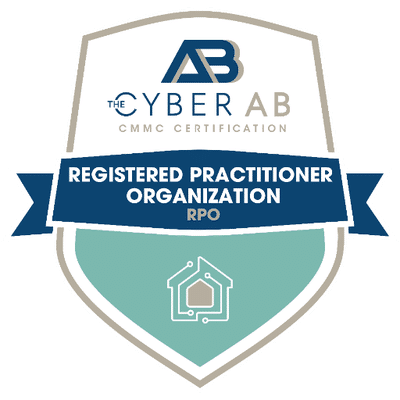The Protective Security Policy Framework (PSPF) is the cornerstone of Australia’s government security regime. In simple terms, it governs how entities protect people and sensitive information.
Let’s break down the PSPF’s crucial elements: We’ll list actionable insights into how to achieve and maintain compliance, which is indispensable for any organization working with government data.
We’ll also learn how to navigate through governance, information, personnel, and physical security requirements, and learn to implement a strategy that meets the high standards set by the PSPF without overwhelming your team.
Key Takeaways
- The PSPF is a strategic framework designed to safeguard Australian Government entities by establishing mandatory requirements for security governance, information security, personnel security, and physical security.
- Sixteen policies, each with a core requirement and supporting requirements, guide government entities in security risk management, emphasizing accountability, planning, investigation, response, review mechanisms, and reporting, which are enforced with specific roles like Chief Security Officers and directives for cyber threat mitigation.
- PSPF compliance brings significant advantages, including enhanced national security, greater trust from stakeholders, access to additional resources and support, and improved opportunities for Australian government contracts due to recognized commitment to stringent security standards.

Understanding the Protective Security Policy Framework (PSPF)

The PSPF is a framework developed by the Australian Government to help protect its people, information, and assets. It provides guidance and resources for government agencies to manage their security risks effectively. The framework outlines a set of policies, principles, and guidelines to assist agencies in implementing protective cyber security measures.
However, the PSPF’s influence extends beyond government agencies. State and territory government agencies that handle Commonwealth classified information must adhere to PSPF standards. Non-government organizations with access to classified information are also bound by relevant parts of the PSPF, ensuring a unified front across different sectors to protect national interests.
The Core Objectives of the PSPF
The PSPF is fundamentally built upon a set of core objectives, with the aim of creating a secure environment for government entities. These objectives encompass:
- Governance
- Information security
- Personnel security
- Physical security
Such a multi-faceted approach ensures that every angle of potential risk is covered, aligning with the overarching goal of creating a stable and protected framework for the functions of the Australian government.
Key Elements of the PSPF Structure
The structure of the PSPF is comprised of 16 policies that collectively fortify the protection of people, information, and assets within government entities. These requirements are strategically developed to address critical aspects of security, including governance structures that identify risk stewards, four key directives for information security, and physical security measures to minimize risks.
The PSPF’s 16 Policies

Together, these 16 policies, each with a core requirement, form an integrated approach that supports the PSPF’s primary aim: establishing a secure physical environment for the Australian Government’s operations.
1 – Role of accountable authority
2 – Management structures and responsibilities
3 – Security planning and risk management
4 – Security maturity monitoring
5 – Reporting on security
6 – Security governance for contracted goods and service providers
7 – Security governance for international sharing
8 – Classification system
9 – Access to information
10 – Safeguarding data from cyber threats
11 – Robust Information and Communications Technology (ICT) systems
12 – Eligibility and suitability of personnel
13 – Ongoing assessment of personnel
14 – Separating personnel
15 – Physical security for entity resources
16 – Entity facilities
Governance Structures and Responsibilities
The governance structures within the PSPF establish a clear framework for accountability and decision-making in security matters. Each entity must have an Accountable Authority to oversee overall security and detail roles for security decisions. With seven core requirements dedicated to security governance, entities are compelled to:
- Demonstrate accountability.
- Implement thorough planning.
- Ensure proper investigation.
- Conduct review processes.
- Maintain reporting standards.
The Chief Security Officer, alongside Chief Information Security Officers, plays a pivotal role in directing the application of a risk-based approach to implement the PSPF effectively.
In the digital age, the PSPF emphasizes the critical need for robust strategies to mitigate online threats. Entities are directed to:
- Classify, handle, and grant secure access to official information.
- Incorporate strategies such as the Essential Eight to prevent security compromises.
- Consult a digital transformation agency for implementing these strategies, which cover everything from application whitelisting to multi-factor authentication and regular backups.
Aligning with a comprehensive cyber security framework and regularly updating mitigation strategies through collaborative efforts, including those facilitated by the ACSC, ensures a strong defense against cyber threats.
The Role of the Australian Cyber Security Centre (ACSC) and the Australian Signals Directorate in PSPF Compliance

In achieving PSPF compliance*, the Australian Cyber Security Centre (ACSC) is an invaluable tool. The ACSC is a part of the Australian Signals Directorate (ASD) and holds a significant role in providing resources and guidance. It also initiates collaborative efforts with government and industry representatives to bolster cybersecurity universally.
The ACSC also issues advisories and alerts to keep organizations abreast of the latest security information relevant to PSPF compliance. From offering free cybersecurity services through the Partner Portal to co-designing new cloud security guidance package with industry, the ACSC bolsters organizations’ security postures.
*While PSPF compliance is not a formal credential, IRAP accreditation is. Talk to 38North Security about achieving IRAP certification.
The Role of the Information Security Manual (ISM) in PSPF Compliance
Organizations working with the Australian government must adhere to the Information Security Manual (ISM) as part of their PSPF obligations, ensuring a standard of security that aligns with national interests.
Additionally, the Information Security Manual serves as a guiding light to CISOs and CIOs, underlining the importance of cybersecurity processes and developments.
Learn about the Information Security Manual here.
Collaborative Efforts with Government and Industry Representatives
The collaborative efforts orchestrated by the ACSC, through its Partnership Program, gather cyber security professionals from various sectors to tackle challenges and build resilience collectively. Exclusive benefits, including threat intelligence and engagement in resilience-building activities, are extended to Network Partners.
Furthermore, the ACSC’s role extends to facilitating local engagement on cybersecurity issues and coordinating responses to cyber incidents in line with PSPF guidelines. The co-designed security policies, such as the updated IRAP policy, exemplify the strength of collaboration in policy development.
Implementing PSPF Measures

The implementation of PSPF measures calls for a systematic approach, commencing with a gap analysis to identify areas requiring enhancement. Engaging with PSPF experts and consultants can provide insightful perspectives during this initial assessment phase.
A comprehensive risk management plan is central to this process, identifying, analyzing, and mitigating threats while ensuring the integration of ICT systems and services adheres to PSPF standards. This plan must be dynamic, accounting for both internal and external risks with tailored strategies.
Assessing Current Security Posture
The first step in conducting a security assessment is to define the scope and objectives, which involves:
- Identifying systems, applications, and data to evaluate
- Conducting a comprehensive assessment requires an inventory of all assets
- Understanding third-party vendor relationships
By evaluating the effectiveness of current security controls and analyzing risks by likelihood and impact, entities can prioritize remediation activities to address PSPF requirements.
Developing a Risk Management Framework
A risk management framework aligned with PSPF requires:
- An in-depth understanding of what needs protection
- Identifying threats
- Determining how to protect people, information, and assets effectively
- Implementation of governance mechanisms to oversee security risk management activities
- Managing the security risks of people through vetting and ongoing education.
Analyzing risks includes reviewing severity and considering how vulnerabilities might compound when paired together.
Advantages of PSPF Compliance for Government Agencies

PSPF compliance guarantees a secure operational environment and offers numerous benefits, specially designed to cater to the distinct needs of agencies. It provides a shield against security incidents and their associated costs, showcasing the value of PSPF compliance in:
- Avoiding data breaches
- Protecting sensitive information
- Ensuring confidentiality and integrity of data
- Building trust with clients and stakeholders
- Meeting regulatory requirements
Furthermore, IRAP accreditation is a testament to an organization’s commitment to high-quality security, unlocking opportunities for government contracts and competitive bidding.
Learn more about IRAP accreditation: What is the IRAP Accreditation/Compliance Process? A Comprehensive Guide
Strengthened National Security and Trust
Achieving PSPF compliance is a significant contribution to national security, fortifying against various threats and fostering trust with public sector customers and stakeholders. When organizations report cyber security incidents to the ACSC, they bolster national cyber threat awareness—a cornerstone for developing updated cyber security advice and capabilities.
Entities that demonstrate robust information security standards through IRAP certification can foster stronger trust and secure partnerships.
Enhanced Access to Resources and Support
Entities that comply with the PSPF gain access to a wealth of resources and support, such as the specialized PSPF hotline offered by the Department of Home Affairs. Moreover, platforms like GovTEAMS create opportunities for collaboration and sharing among the protective security community, further enhancing security practices.
Tools and Services to Support PSPF Compliance

A variety of tools and cloud services, including the Hosting Certification Framework (HCF) which provides a structured cloud services certification program for secure hosting services, aids in the path to PSPF compliance. Service Providers are supported with compliance management software solutions such as AuditBoard and PowerDMS, which offer capabilities from risk assessments to real-time monitoring. To further assist in the process, a certified cloud services list can be a valuable resource for organizations.
These tools are pivotal in ensuring that Service Providers align with PSPF standards and maintain ongoing compliance.
Utilizing IRAP Assessors for Independent Review
IRAP assessors, who are part of the Information Security Registered Assessors Program (IRAP), play a critical role in the independent review of organizations’ information systems. They provide security gap analysis, identify risks, and verify the implementation of security measures within organizations. With recent enhancements to the IRAP, assessors are now required to maintain up-to-date cybersecurity knowledge and a Negative Vetting Level 1 security clearance, ensuring a high standard of assessment.
IRAP assessors undergo comprehensive training to appraise organizations’ security posture effectively.
Learn more: A Comprehensive IRAP Assessment Checklist
Leveraging Technology for Compliance Monitoring
Technology is a formidable ally in monitoring and managing PSPF compliance. Compliance management platforms like Sprinto and Connecteam offer automation, monitoring, and real-time reporting capabilities that streamline the compliance process. Cloud-based systems and software solutions cater to organizations with unique legal and safety requirements, offering centralized management, including automated tracking and reporting for compliance training requirements.
Adapting to Changes in the PSPF
Maintaining PSPF compliance necessitates agility and responsiveness to amendments and updates. Organizations need to be proactive in subscribing to notification systems from relevant Australian government bodies to stay informed about PSPF changes.
Keeping abreast of amendments, such as the new core requirements introduced in PSPF Policy 10, and updates to the IRAP policy, is essential for entities to remain compliant with the evolving landscape of security standards.
Keeping Abreast of Amendments and Updates
Subscribing to notification systems is a straightforward way for organizations to keep updated with PSPF amendments and updates. These updates can impact an entity’s compliance status, and staying informed is paramount to ensuring that security measures align with the latest standards.
Training and Development for Compliance Teams
Training and development are cornerstones of PSPF compliance. With the revised IRAP training courses covering IRAP and ISM fundamentals, compliance teams are better equipped to understand and implement PSPF requirements effectively.
Continuous learning and skill development are vital for compliance teams to navigate the complexities of PSPF and maintain a posture of readiness.
Summary
As we navigate the intricate terrain of security policy, the Protective Security Policy Framework stands as a beacon of rigor and resilience. From establishing robust governance structures to implementing cutting-edge cyber threat mitigation strategies, the PSPF is the cornerstone of a secure and trusted Australian government. The ACSC’s role in guiding and supporting entities through PSPF compliance cannot be overstated, providing vital resources and fostering collaborations that fortify our national cybersecurity. Implementing PSPF measures is a journey of continuous improvement, with technology playing a crucial role in streamlining compliance processes. By staying informed and proactive in training, government agencies can adapt to PSPF changes, ensuring that Australia’s security standards remain at the forefront. Let this be a call to action: to remain vigilant, prepared, and ever-evolving in our pursuit of excellence in high quality security.
Frequently Asked Questions
What is the PSPF framework?
The PSPF framework is a policy that helps Australian Government entities protect their people, information, and assets, both domestically and internationally. It sets out the government’s protective security policy and assists in its effective implementation.
What is the security policy framework?
The security policy framework is a comprehensive set of guidelines and regulations that outline an organization’s security goals and the measures required to achieve them. It includes the vision of senior leadership, relevant laws and regulations, and specific guidance for implementation.
What is the PSPF official information?
The PSPF official information includes requirements for classifying and marking information, as well as guidelines for its storage, handling, access, and disposal. It is important to adhere to these standards to ensure security and confidentiality.
What does IRAP stand for in Australia?
IRAP stands for Information Security Registered Assessors Program in Australia. It is a program governed by the Australian Cyber Security Centre that endorses individuals to provide cybersecurity assessment services to the Australian government.
Who must comply with the PSPF?
All Australian Government agencies, state and territory government agencies handling Commonwealth classified information, and non-government organizations with access to such information must comply with the PSPF standards. This ensures the security of classified information across different entities.
How is the PSPF different from IRAP?
The PSPF and IRAP (Information Security Registered Assessors Program) are both initiatives within the Australian government aimed at enhancing security measures, albeit in different domains.
- PSPF (Protective Security Policy Framework):
- The PSPF primarily focuses on protective security, encompassing policies, guidelines, and requirements to safeguard government assets, information, and people from security risks.
- It addresses a broad range of security areas including physical security, personnel security, information security, cybersecurity, and risk management.
- PSPF provides a structured framework for government agencies to implement protective security measures effectively and consistently.
- IRAP (Information Security Registered Assessors Program):
- IRAP compliance, on the other hand, is specifically focused on assessing the security of government ICT systems and services.
- It is managed by the Australian Cyber Security Centre (ACSC) and involves registered assessors who conduct security assessments of ICT systems against predefined criteria and controls.
- IRAP assessments are required for ICT systems that handle government information classified as PROTECTED or above.
Learn more about the IRAP certification process and the Australian Signals Directorate: What is the IRAP Compliance Process? A Comprehensive Guide
While PSPF provides overarching policies and guidelines for protective security across government agencies, IRAP compliance complements this effort by offering a specialized program for assessing the security of ICT systems and ensuring they meet the necessary security standards and requirements, particularly for handling sensitive government information. Therefore, IRAP assessments help agencies ensure compliance with PSPF requirements in the context of ICT systems and services.

Achieve IRAP Certification with 38North Security — talk to a cybersecurity professional today!





